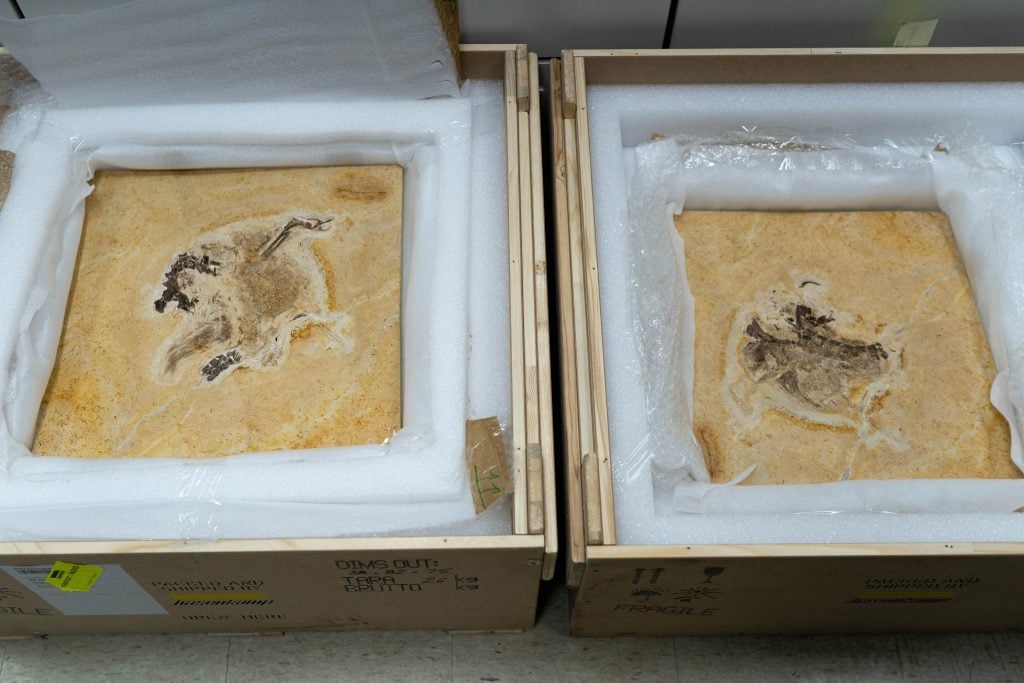A dinosaur fossil that mobilized the Brazilian scientific community has returned home. At a diplomatic ceremony on June 5, German Foreign Minister Annalena Baerbock met with her Brazilian counterparts and handed over the 120-million-year-old specimen of Ubirajara jubatus, which has been the focus of a long-running paleontological theft scandal.
The specimen was found by researchers in the state of Ceara, northeast Brazil, in 1990, before ending up in the collection of the National Museum of Natural History in Karlsruhe five years later. The dinosaur was then unknown and had features that baffled scientists, including its cover, which some thought was algae trapped in the pale limestone.
In a 2020 article, an explanation of the dinosaur’s mysterious appearance and a name were provided: Ubirajara jubatus was a rare non-avian dinosaur with feather-like structures and pointed rods attached to its shoulders, the first of the kind to have been found. in the southern hemisphere.
The Brazilian scientific community reacted strongly to the article by Cretaceous research, claiming that the fossil had been illegally taken out of the country and demanding its return. The hashtag #UbirajaraBelongstoBR quickly trended on social media, dragging politicians into the fray.

German officials returned the dinosaur fossil on June 5. Photo: Courtesy of the Ministry of Science, Technology and Innovation.
For their part, the scientists co-authors of the research on Ubirajara jubatus claimed that the fossil was transported to the museum after receiving the appropriate authorization from the Brazilian authorities. That didn’t appease Brazilian scientists who felt the dinosaur’s provenance was murky at best. Although it has been illegal since 1942 to export fossils from the country commercially, a lucrative black market has flourished for years.
A three-year stalemate ensued, which finally ended with Baerbock’s arrival in Brasilia.
“We spared no effort to make Ubirajara’s return possible,” said Inácio Arruda, Brazil’s Science and Technology Secretary for Social Development. said in a press release. “Without the mobilization of the Brazilian scientific community, we would not have succeeded. The German government was sensitive to our request and, all together, we won this victory.
The dinosaur that scientists believe measured 4.5 feet from snout to tail and weighed about as much as a large chicken will now be on display at the University Museum of Paleontology in Ceara.
More trending stories:
Follow Artnet News on Facebook:
Want to stay one step ahead of the art world? Subscribe to our newsletter to receive breaking news, revealing interviews and incisive reviews that move the conversation forward.
